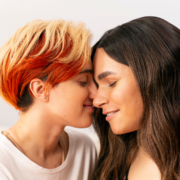To the UVic students, staff, and faculty,
It is with great sadness and pain that we must respond to a spree of transphobic and transmisogynistic graffiti across campus.
This type of hate is not welcome on our campus. Collectively as the University of Victoria Student Society’s (UVSS) Advocacy Groups, we exist to support the diversity of our students. We stand together to affirm that gender diversity is welcomed, accepted, and supported at the UVSS and in the Student Union Building. We strive to ensure the UVic Campus remains a safe and welcoming space for all students, and we are pained to see when it falls short of that.
The recent graffiti on campus carries harmful and false messages that we must counteract immediately. Genitalia does not define womanhood, nor any other gender identity; not all women have penises and those that do not are just as valid as those that do. Trans women are women. Full stop.
Trans-exclusionary radical feminism (TERFism) is a hateful ideology that weaponizes misconceptions and shallow understandings of biology, gender, and sex. We also acknowledge the heteropatriarchal colonial origins of the sex-gender binary, including the historical and ongoing effects it has on Two-Spirit, trans, and queer Indigenous individuals. The UVSS will not tolerate this hate.
To our trans feminine and trans women community members: You are loved. You are seen. You are valid. You are not alone. We stand with you. Please feel free to reach out for supports from UVic Pride, the Gender Empowerment Centre (GEM), or the Anti-Violence Project (AVP).
If you or someone you know has information regarding graffiti spreading on campus, please do not hesitate to reach out.
Signed,
UVSS Board of Directors
UVic Pride
Society for Students with a Disability (SSD)
Gender Empowerment Centre (GEM)
Students of Colour Collective (SOCC)
Native Students Union (NSU)
A note from the UVSS Board on January 27:
We want to acknowledge and appreciate the labour of trans people who created the statement above.
Centring trans voices and experiences is crucial, but our communities also need to ensure trans people don’t have to hold the burden of noticing and calling out transphobia, in addition to personally experiencing the harm and pain that it inflicts. Non-trans people need to step up to help address these injustices. Moreover, we acknowledge when trans, non-binary and two-spirit people share their experiences, it is not the place of the UVSS, or peoples who do not share the identity or lived experience to correct, debate, or question their experience.
The UVSS has deep work to do to ensure our shared spaces, our workplace, and everything we do is safer for trans, non-binary, two-spirit, and gender-diverse community members. It is a priority for us, but our actions have not always lived up to our values, and have sometimes failed to ensure safety for some community members. The UVSS Board is committed to addressing this and doing better. We will be undertaking a policy review and working towards internal culture change.








